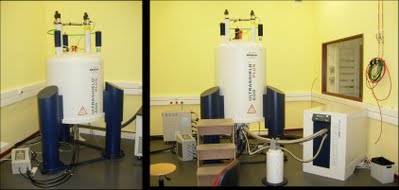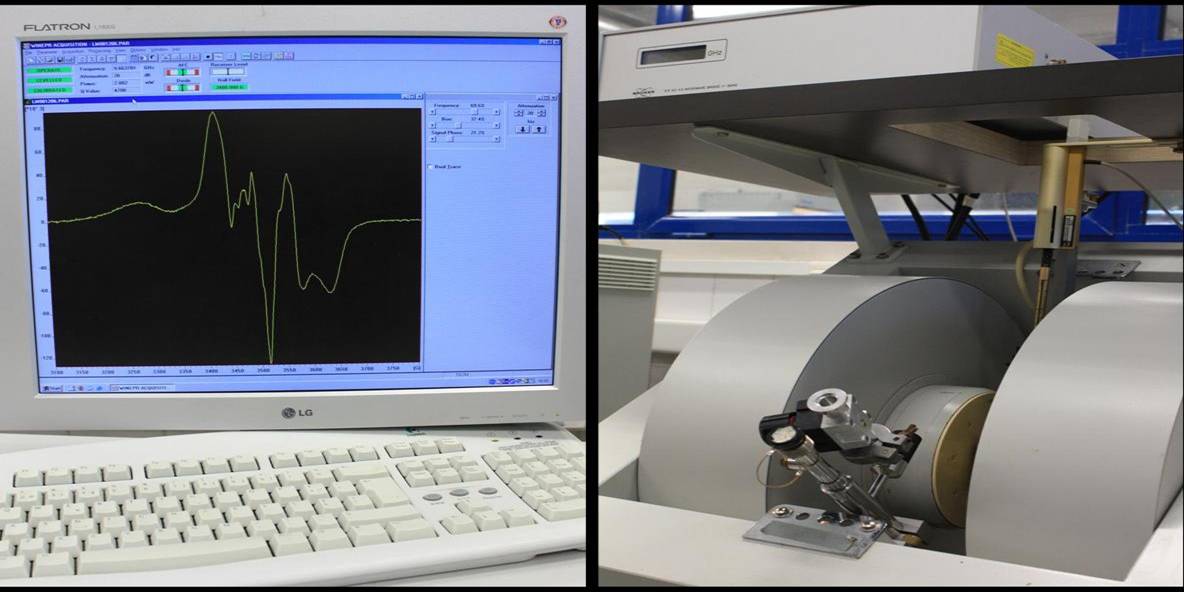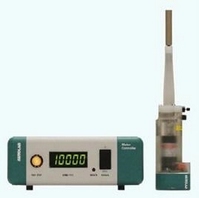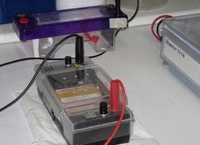
Facilities | Equipment
Our research is supported by a wide range of techniques (scroll down to see more details), namely:
• NMR, EPR, Mössbauer and UV-visible spectroscopies
• stopped-flow
• bioelectrochemistry
• proteomics
• anaerobic sample preparation and assaying
• common biophysical techniques
• cultures growth
• molecular biology
• protein purification
• computational biochemistry
For further details on applying these techniques to your studies please feel free to contact us.
NMR SPECTROMETERS
Solution-state NMR spectroscopy has been applied for the determination/analysis of protein structures and molecular interactions at atomic resolution.
The NMR 400 MHz and 600 MHz spectrometers (Bruker), equipped with a cryo-probe, are part of Portuguese NMR Network, PTNMR.
EPR SPECTROMETER
EPR spectroscopy has been widely used to study the redox centres of our metalloenzymes and metalloproteins, the metabolism of radicals (e.g.nitric oxide) or the biological membranes fluidity.
X-band spectrometer (Bruker EMX 6/1); cavities for room and low (>4K) temperature, perpendicular and parallel modes (Bruker ER 4102ST and ER4116DM rectangular cavities); continuous-flow cryostat (Oxford Instruments ESR900).
UV-VISIBLE SPECTROPHOTOMETERS
We have several spectrophotometers and diode-array apparatus, equipped with stirring and thermostatisation.
A time-resolved detection (millisecond time resolution) is achieved with a stopped-flow apparatus.
BIOELECTROCHEMISTRY
We use several electrochemical methods (differential pulse, square wave and cyclic voltammetry, amperometry, potentiometry) to the study of metalloproteins. From the simple determination of reduction potentials to the more complex acquisition of relevant kinetic and mechanistic information about these systems, a broad range of information can be achieved with these techniques.
A set of potentiostats (Autolab PGSTAT models 10, 12, 30 and μAutolab Type III all from Eco-Chemie), electrodes (including rotating disk electrodes) and electrochemical cells are available for electrochemical studies.

PROTEOMICS
The proteomes of bacteria and yeast are being studied by two-dimensional electrophoresis.
A complete set of equipments to run the 2D electrophoresis: Ettan IPGphor3, Ettan DALTsix (21x24cm gels), Miniprotean III - Bio-Rad (10x7cm gels), Hoefer SE600-15-1.5 (16x16cm gels) and Ettan Spot Picker (GE Healthcare) are available.
foto
ANAEROBIC SAMPLES HANDLING
One anaerobic (argon filled) chamber (Braun) allows us to manipulate and study (bio)molecules in the absence of oxygen (EPR, UV-visible, kinetic, electrochemical studies, among others).
CULTURES GROWTH
MOLECULAR BIOLOGY


PROTEIN PURIFICATION
We are equipped with several HPLC, FPLC and electrophoresis apparatus and with the general equipment for basic biochemical characterization of proteins.

In addition, the group have access to other specialised techniques through the Analytical Laboratory of FCTUNL (MALDI-TOF MS, ICP-AES, elemental analysis, X-ray, and many other that can be found in the link).